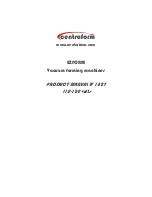
Jabiru Aircraft
Pilot Operating Handbook
Model J170-D
JP-FM-13
Revision:
0
1
2
3
4
28 Feb 2020
Page 3-21
3. EMERGENCY PROCEDURES
This section describes the procedures to be adopted in the event of an emergency or abnormal
situation occurring in the J170-D aircraft.
The procedures are arranged in the sequence considered to be the most desirable in the majority
of cases. Steps should be performed in the order listed unless good reasons for deviation exist.
It should be remembered however, that all conceivable eventualities cannot be foreseen by the
manufacturer. Particular circumstances such as multiple or unanticipated emergencies, adverse
weather etc. may require modification to these procedures. A thorough knowledge of the aircraft
and its systems is essential to analyse the situation correctly and determine the best course of
action in any particular circumstance.
The following
basic rules
apply to all aircraft emergencies:
1.
Maintain
Aircraft Control.
2.
Analyse
the situation and take appropriate action.
3.
Land
as soon as practicable.
3.1 AIRSPEEDS FOR EMERGENCY OPERATIONS
Maximum Glide
…………………………………………… . 65 KIAS*
Landing Without Engine Power (Flaps Full) …………… 65 KIAS
* - A slightly higher speed may give better distance over the ground if gliding into wind; a slightly
slower speed if gliding downwind.
















































